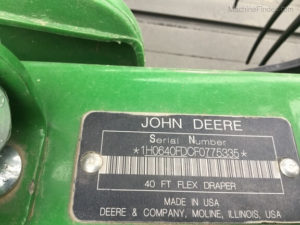Serial Numbers
Stock items with serial numbers need to be tracked specifically by serial number for warehouse operations like shipping, but generically by product type for other operations like making quotes and sales orders. Finale’s user interface supports serial numbers and other lot information with list items that you can open up to see the details when you want.

Wholesale and distribution companies that receive shipments of serial numbered products often use barcode scanning systems to scan in the serial numbers if they are using the original serial numbers from the manufacturer or supplier. Finale’s inventory management system includes the capability of scanning in serial numbered items in batches of the same product type with just a single scan per item, or of assorted product types with one or two scans per item, depending on whether you choose to scan a barcode for the item type or select the item type from a drop down.
Serial numbers
Video Transcription
Hi, this is Will Harvey of Finale Inventory. I’m going to give a quick demonstration of how to keep track of stock items that have serial numbers. Beginning from the home page in Finale Inventory, we’re going to do a little story here where we first receive some items into our inventory with specific serial numbers and then we can sell them to a customer picking exactly which serial numbers we sell to a customer. So the story begins with a new purchase. I’m going to purchase a spinal cage. We’ll pretend this is a medical device company and I’m going to purchase a quantity of two of them. I’ve created the purchase order.
When the shipment arrives, I go into Finale Inventory, click on the shipments tab and now I’m going to receive the shipment. This is the period of time when I would look at the serial numbers or scan the serial numbers in, or scan the barcode in, fit the items that I’m receiving and then specify here exactly what spinal cage serial numbers I am receiving. So, I’m going to do that by specifying both the serial number and the location into which I’m going to receive it. I’m going to receive it into my container called M-102 and the serial number for this one is going to be 55. We’ll make it short just so that we can do a simple example. Secondly, I’m going to do this once again for the second item, and that’s going to be serial number 56. Okay, so if I look at this table here, I’ve now got the one with serial number 55 and just blow it, and one with serial number 56. I’m going to receive one of each of those naturally because they’re serial numbers. Save that. Receive the shipment.
Okay, so if I go home and look at my stock now, and specifically look at the spinal cages, down here is the spinal cage 40 millimeter. It says I have three in stock. If I click the turny-downy arrow to see the details, the three that I have in stock include one with the serial number 55 and another with the serial number 56. Those were the two that we just received. I actually don’t have to demonstrate selling these to a customer because it’s pretty much the same process as receiving an item, except it’s in reverse. So it’s actually just slightly easier because we can pick among the specific serial numbers that we have in stock when we create the shipment to ship to the customer. So that’s about all that there is to it for creating items and managing stock with serial numbers.




